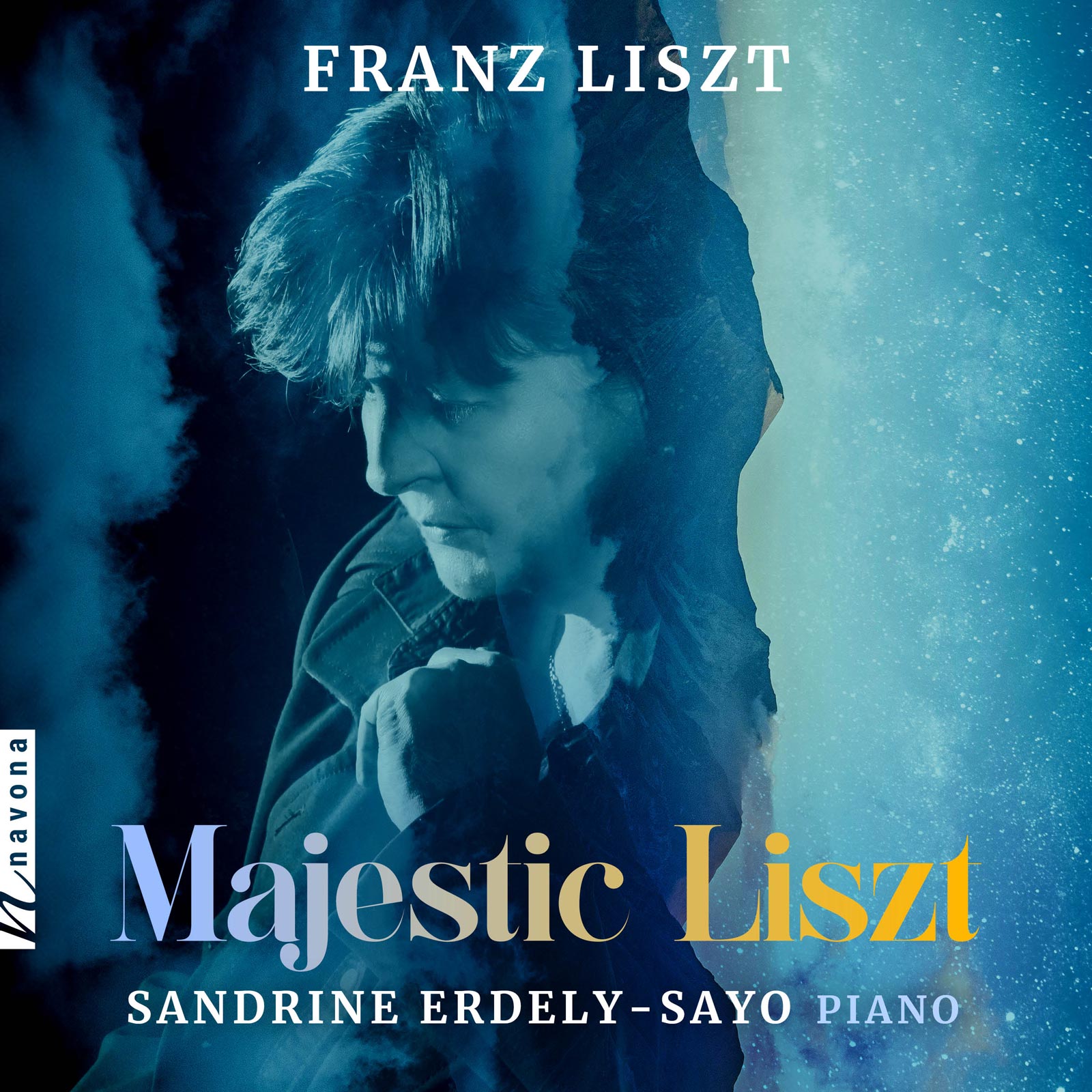Majestic Liszt
Franz Liszt composer
Sandrine Erdely-Sayo piano
Piano visionary Sandrine Erdely-Sayo pays a dignified tribute to Maestro Franz Liszt in MAJESTIC LISZT, an intimate recording of some of his finest works. Having a deep respect and admiration since childhood, Erdely-Sayo pours every ounce of her being into capturing the contemplative and song-like quality that pervades Liszt’s middle-to-late repertoire. A rich and elegant session, it’s impossible not to be enraptured by her sensitive and languishing treatment in Consolations, nor her delicate attention to poetics in the melody lines of Ständchen and Romance in E Minor. Erdely-Sayo shines in the beloved Liebesträume, delivering an electrifying interpretation while still maintaining a dream-like musicality at its core.
MAJESTIC LISZT is a perfect introduction to the Maestro’s oeuvre, catering to both devoted Liszt enthusiasts and those just starting to explore his music.
Listen
Stream/Buy
Choose your platform
Track Listing & Credits
| # | Title | Composer | Performer | |
|---|---|---|---|---|
| 01 | Romance in E minor, S.169 | Franz Liszt | Sandrine Erdely-Sayo, piano | 3:16 |
| 02 | Bénédiction de Dieu dans la solitude | Franz Liszt | Sandrine Erdely-Sayo, piano | 18:17 |
| 03 | Saint François de Paule marchant sur les flots, S.175 | Franz Liszt | Sandrine Erdely-Sayo, piano | 8:47 |
| 04 | Consolation No. 1: Andante con moto, S.172 | Franz Liszt | Sandrine Erdely-Sayo, piano | 1:30 |
| 05 | Consolation No. 2: Un poco più mosso, S.172 | Franz Liszt | Sandrine Erdely-Sayo, piano | 3:24 |
| 06 | Consolation No. 3: Lento placido, S.172 | Franz Liszt | Sandrine Erdely-Sayo, piano | 4:22 |
| 07 | Consolation No. 4: Quasi adagio, S.172 | Franz Liszt | Sandrine Erdely-Sayo, piano | 3:06 |
| 08 | Consolation No. 5: Andantino, S.172 | Franz Liszt | Sandrine Erdely-Sayo, piano | 2:19 |
| 09 | Consolation No. 6: Allegretto sempre cantabile, S.172 | Franz Liszt | Sandrine Erdely-Sayo, piano | 2:32 |
| 10 | Liebesträume No. 3 In A-Flat, S.541 | Franz Liszt | Sandrine Erdely-Sayo, piano | 4:50 |
| 11 | En Rêve, Nocturne, S.207 | Franz Liszt | Sandrine Erdely-Sayo, piano | 2:12 |
| 12 | Schwanengesang No. 4, D. 957 - IV. Ständchen (Serenade) | Franz Liszt | Sandrine Erdely-Sayo, piano | 6:49 |
Recorded September 9, 2022 in Houston TX
Session Producer and Engineer Brad Sayles
Assistant Engineer Giancarlo Minotti
Executive Producer Bob Lord
VP of A&R Brandon MacNeil
A&R Ivana Hauser
VP of Production Jan Košulič
Audio Director Lucas Paquette
VP, Design & Marketing Brett Picknell
Art Director Ryan Harrison
Design Edward A. Fleming
Publicity Kacie Brown
Artist Information

Sandrine Erdely-Sayo
Sandrine Erdely-Sayo, pianist, composer, and artistic director of Piano on the Rocks International Festival began piano studies at the age 4 and has won numerous prizes across a career that began in Perpignan, France. She continued her musical studies with Denyse Rivière in Paris and with Christian Manen at the Paris Superior Conservatory where she received first prize for specialization in music theory. There, she pursued special studies in harmony, counterpoint, and fugue. At 14 she wrote Three Pieces for Chamber Orchestra that were played at the Chatelet Theater in Paris.

